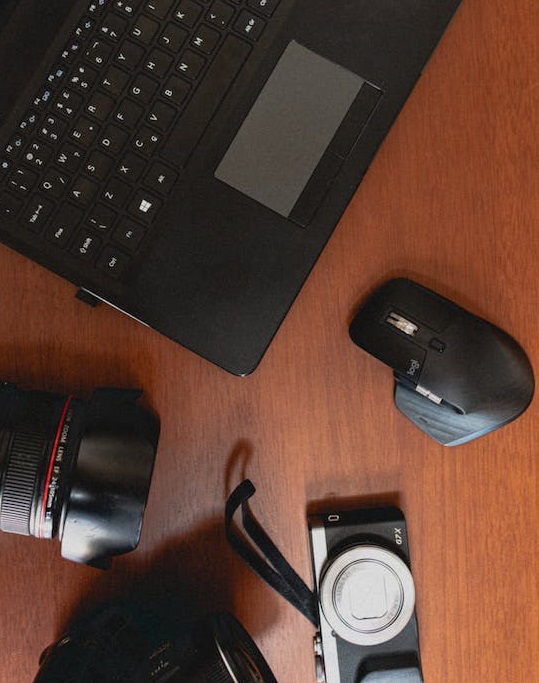Most people have had this experience: from a distance you watch someone walk. You make a quick unconscious assessment of the person's age. Then, when they come closer and you can see their facial features -- you are genuinely surprised. They may be much younger, or much older, than you thought. At first glance, posture communicates more about someone's age than almost anything else. On the other hand, a person in their seventies or eighties may look and seem much younger than their years if they have maintained, or developed, a natural healthy uprightness.
We know a lot about people by watching their posture -- even if we don't always stop to think about it. Our posture sends messages both outward to the world around us, and inward to the enthusiastic 'animal' inside who wants to be ready for action. (Yes, we are part of the animal kingdom!) For instance, when we see a woman approach us with her gaze downward toward the ground, we get an entirely different impression than if she is looking straight ahead. Another example: If a man's chest is sticking out and this back looks stiff, we might read that as pride, stubbornness, or rigidity.
Our assessments are certainly not always correct, but the point is that we do make these kind of observations all the time, automatically. Why? Because we instinctively understand that posture is fundamental to optimal human health. Good posture:
provides space for breathing and for vital organs to work freely;
improves circulation and energy flow;
allows the skeleton to work as it was intended, resulting in reduced muscle tension;
allows for greater comfort and mobility;
improves mood, self-confidence and appearance.
So, the question becomes, how do we improve posture, and can we do so after age 50:
We know a lot about people by watching their posture -- even if we don't always stop to think about it. Our posture sends messages both outward to the world around us, and inward to the enthusiastic 'animal' inside who wants to be ready for action. (Yes, we are part of the animal kingdom!) For instance, when we see a woman approach us with her gaze downward toward the ground, we get an entirely different impression than if she is looking straight ahead. Another example: If a man's chest is sticking out and this back looks stiff, we might read that as pride, stubbornness, or rigidity.
Our assessments are certainly not always correct, but the point is that we do make these kind of observations all the time, automatically. Why? Because we instinctively understand that posture is fundamental to optimal human health. Good posture:
provides space for breathing and for vital organs to work freely;
improves circulation and energy flow;
allows the skeleton to work as it was intended, resulting in reduced muscle tension;
allows for greater comfort and mobility;
improves mood, self-confidence and appearance.
So, the question becomes, how do we improve posture, and can we do so after age 50:
Most people have been taught by a parent or teacher to "Stand up - or sit up -- straight!" And we have all tried to do just that - straighten up from our sometimes less-than-perfect posture, in the midst of a long day or a tedious task, or while seated in an uncomfortable chair. Is there some better way than making these kinds of heroic and continual efforts? As older adults, is it too late to make the necessary changes?
For starters, it's helpful to modify our view of posture. Posture is not a frozen state; it's completely dynamic, ever-changing. Another thing posture is not: it is not something that we can mimic by following commands such as "Pull your shoulders back" or "Tuck your chin in." Posture emerges from the inside out, and it comes as a result of two conditions: letting go of unnecessary muscle tension, and becoming more self-aware. We can change these conditions in ourselves at any age.
Many disciplines have made attempts to help people do this, with some success. Yoga, Pilates, bodybuilding, and dance sometimes help. However, Bones for Life and Feldenkrais practitioners have the most impressive track records. Their lessons, falling into a category known as "somatic education" teach people the inner skills needed to improve posture, that is, to stand in a way that feels pleasurable rather than forced.
Here's one sample somatic lesson to help improve your posture.
First, lie on down on the floor with your legs long and arms to your side. Do a quick body scan. Ask yourself: "Which parts of my body are making firm contact with the floor right now, which are barely touching the floor, and which are not touching at all? Is it the same on my left and right sides?" Now, to begin:
Remain on the floor with your back, hips and head on the floor. Bend 90 degrees at the hips and knees, and place your feet on the wall.
Lightly press your feet into the wall, as if you are pushing the wall away from yourself.
Very important: Use only about a third of your strength. Working hard will be counter-productive.
Continue to repeat this in a very slow, rhythmic way, first pressing your feet into the wall, and then gradually releasing the pressure.
Notice the response in the rest of your body that occurs when you press your feet into the wall. This response varies from person to person, and tends to increase with repetition.
Perhaps your pelvis tilts in a particular way in response to pressing into the wall with your feet. This is not something you have to make happen; it happens on its own.
As your pelvis tilts and your low back moves toward the floor; you may also feel small movements in your spine, upper chest, ribcage, neck or head.
Enjoy all of these subtle movements that occur when you press your feet into the wall for 10-15 minutes.
Rest occasionally.
At the end of your lesson, repeat your body scan, again asking: "Which parts of my body are making firm contact with the floor, which are barely touching the floor, and which are not touching at all? Is it the same on my left and right sides?" Notice what has changed.
Finally, stand up and see how it feels to be vertical. Has something changed about your posture? Take a short walk, and enjoy any changes you may feel in your walking.
This kind of simple lesson can result in quite dramatic and surprising results over time, teaching you to have better posture with very little effort. Even those of us who are 50, 60...even 90, can still make dramatic improvements in our posture, with resulting improvements to our overall well-being -- by changing from the inside out.







